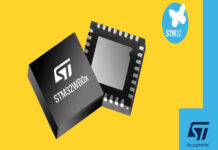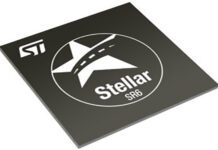It’s taken nine years, but developers are close to launching the first LE Audio designs with superior wireless sound. Nordic’s nRF5340 Audio DK is helping them get there
Adolf von Henselt’s Piano Concerto in F minor, Opus 16, published in 1846, is considered almost impossible to play by even the world’s most highly skilled keyboard virtuosos. There are said to be only three recordings of the piece in existence. It’s not so much the complexity of the music that makes it challenging—although that’s far beyond most professional piano players—more the speed and contortions of the fingers needed to reach the notes.
According to classical music website, Ludwig van Toronto, no less than expert pianist Anton Rubinstein—described as among the greats of 19th-century piano maestros—failed to master the work, declaring it a waste of effort that required “abnormal formations of the hand”. Henselt couldn’t understand what all the fuss was about; his fingers were unusually elastic and enabled him to hone a technique well beyond the physical capability of other players.
While playing the Piano Concerto is not for the faint-hearted, neither is recording it in all its glory. The piece is complex and nuanced. That makes the quality of the analogue-to-digital conversion during modern recording, and the digital-to-analogue conversion when listening back through digital players, highly influential on the audio experience.
Enhancing digital audio
The benchmark for high quality digital sound is the CD. With a decent recording, a good CD player and wired headphones, hi-fi buffs can enjoy the full experience of complicated arrangements such as Piano Concerto. Wireless headphones and earbuds are a different matter. Today’s wireless technology doesn’t have the throughput demanded for pure CD-quality playing, so a compression/decompression (codec) algorithm is used to lower the throughput requirement. That solves the wireless streaming challenge but leaves the music lacking dynamic range, depth and vitality.
Consumers demanded better. Surprisingly, a craving for better wireless audio wasn’t initiated by music lovers, rather it was kick-started by the hard-of-hearing. People with diminished hearing have long wanted to wirelessly connect their hearing aids to smartphones and other Bluetooth-equipped devices, but the relatively high power consumption of Classic Bluetooth proved a problem. Hearing aids are worn for many hours each day and only have space for small batteries – so low power consumption is critical.
In 2013, the Bluetooth Special Interest Group (SIG) started work on a wireless audio project—which eventually led to Bluetooth LE (Low Energy) Audio—targeted at the hearing aid ecosystem and intended to extend battery life. But soon consumer audio companies realized that the hearing-aid use cases were equally applicable to their market. As a result, the LE Audio project expanded to focus not only on battery life but also audio quality and eventually grew to become the Bluetooth SIG’s largest ever specification development program.
Short cut to superior wireless audio
LE Audio was launched in December 2020. At the heart of the technology is the Low Complexity Communication Codec [LC3], said to be one of the most advanced wireless codecs on the market. LC3 cleverly allows developers to trade off battery life against wireless sound quality depending on the target application.
The codec requires decent processing power to maximize its potential. Nordic’s nRF5340 is the perfect wireless SoC for the job. The chip features a dedicated Arm Cortex M33 application processor, optimized for performance, together with an M33 processor to supervise wireless connectivity. This second processor is optimized for low power consumption. The SoC is accompanied by a Nordic development kit (DK), the nRF5340 Audio DK. The DK contains everything the developer needs to get started with LE Audio projects. LE Audio has taken a while to reach commercialization, but now it’s here. And it’s gaining serious attention. For example, Sennheiser, one of the world’s most renowned audio brands, says it will be using Nordic’s Bluetooth LE Audio technology in selected future consumer products. The technology that Sennheiser is using in its products is also available to any developer. They can use one or more nRF5340 DKs to design, for example, earbuds supporting True Wireless Stereo (TWS). That’s a sound consumers desire almost as much as pianists crave elastic fingers.















